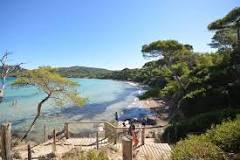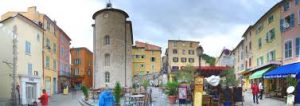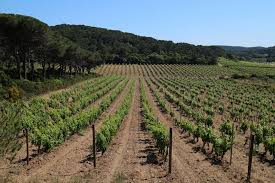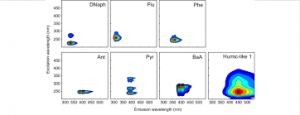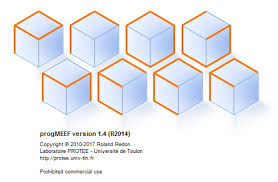The Scientific Board (alphabetical order)
M. Bieroza (Upsala) – Sweden 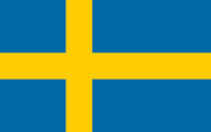 , E. Carstea (NIRDO, Magurele) – Romania
, E. Carstea (NIRDO, Magurele) – Romania 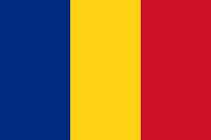 , P. Comon (GIPSA Lab, Grenoble) – France
, P. Comon (GIPSA Lab, Grenoble) – France  , M. Goutx (MIO) – France
, M. Goutx (MIO) – France  , M. Khan (Institute of Surface-Earth System Science,Tianjin) China
, M. Khan (Institute of Surface-Earth System Science,Tianjin) China 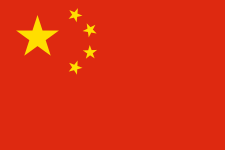 , P. Kowalzuck (IOPAN, Sopot) – Poland
, P. Kowalzuck (IOPAN, Sopot) – Poland 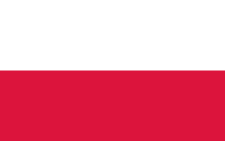 , X. Luciani (LSIS, Toulon) – France
, X. Luciani (LSIS, Toulon) – France  , D. Milori (EMBRAPA, São Carlos) – Brasil
, D. Milori (EMBRAPA, São Carlos) – Brasil 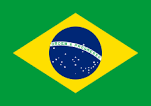 , S. Mounier (MIO) – France
, S. Mounier (MIO) – France  , R. Redon (MIO) – France
, R. Redon (MIO) – France  , C. Santinelli (CNR Italie) – Italie
, C. Santinelli (CNR Italie) – Italie 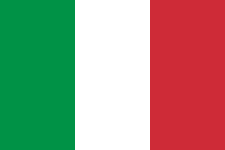 , M. Tedetti Marc (MIO) – France
, M. Tedetti Marc (MIO) – France  –
–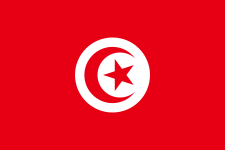 , O. Zielinski (ICBM, Oldenburg) – Allemagne
, O. Zielinski (ICBM, Oldenburg) – Allemagne  .
.
****
 M. Bieroza (Upsala) – Sweden
M. Bieroza (Upsala) – Sweden  : Researcher at Department of Soil and Environment, Swedish University of Agricultural Sciences (Uppsala, Sweden). She is a hydrologist and biogeochemist studying water quality in agricultural catchments subject to eutrophication pressures. Her research focuses on high spatial and temporal resolution dynamics of phosphorus, nitrogen and organic matter in streams and the controlling role of hydrological and biogeochemical processes. Her research on organic matter involves characterization of reactivity with fluorescence and absorbance spectroscopy. URL : https://www.slu.se/en/cv/magdalena-bieroza/
: Researcher at Department of Soil and Environment, Swedish University of Agricultural Sciences (Uppsala, Sweden). She is a hydrologist and biogeochemist studying water quality in agricultural catchments subject to eutrophication pressures. Her research focuses on high spatial and temporal resolution dynamics of phosphorus, nitrogen and organic matter in streams and the controlling role of hydrological and biogeochemical processes. Her research on organic matter involves characterization of reactivity with fluorescence and absorbance spectroscopy. URL : https://www.slu.se/en/cv/magdalena-bieroza/
****
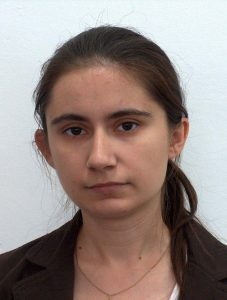 E. Carstea (NIRDO, Magurele) – Romania
E. Carstea (NIRDO, Magurele) – Romania  : Research scientist at the National Institute of R&D for Optoelectronics, Romania. She studied Biophysics at the Faculty of Physics, University of Bucharest. In 2010, she obtained her doctorate from the University of Bucharest. Between 2007-2010, as a Visiting Scholar at the University of Birmingham, she studied the use of fluorescence spectroscopy to monitor surface water quality. In 2013, she returned to the University of Birmingham, where she worked as a Marie Curie Fellow on testing the ruggedness of fluorescence spectroscopy in wastewater treatment plants. URL : https://sites.google.com/site/elfridacarstea/
: Research scientist at the National Institute of R&D for Optoelectronics, Romania. She studied Biophysics at the Faculty of Physics, University of Bucharest. In 2010, she obtained her doctorate from the University of Bucharest. Between 2007-2010, as a Visiting Scholar at the University of Birmingham, she studied the use of fluorescence spectroscopy to monitor surface water quality. In 2013, she returned to the University of Birmingham, where she worked as a Marie Curie Fellow on testing the ruggedness of fluorescence spectroscopy in wastewater treatment plants. URL : https://sites.google.com/site/elfridacarstea/
****
 P. Comon (GIPSA Lab, Grenoble) – France
P. Comon (GIPSA Lab, Grenoble) – France  : Specialist of Signal Processing and Data Science. His recent contributions addressed the existence, uniqueneness, and computation of best low-rank approximation of nonnegtive tensors.
: Specialist of Signal Processing and Data Science. His recent contributions addressed the existence, uniqueneness, and computation of best low-rank approximation of nonnegtive tensors.
URL: http://www.gipsa-lab.fr/~pierre.comon
[1] Y. Qi, P. Comon, and L. H. Lim, « Uniqueness of non-negative tensor approximations”, IEEE Trans. Inf. Theory, vol.62, no.4, pp.2170-2183, April 2016. Available online at http://arxiv.org/abs/1410.8129
****
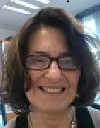 M. Goutx (MIO) – France
M. Goutx (MIO) – France  : CNRS researcher at the Mediterranean Institute of Oceanology (MIO) (Marseille, France). She is a biogeochemist studying the dynamics of dissolved (DOM) and particulate (POM) organic matter at physical and biological marine interfaces, and export processes of DOM and POM beyond the euphotic layer as a function of production regimes. She focused on FDOM sensors with the aim to better observe the distribution and the spatial & temporal variability of natural DOM and anthropogenic polycyclic aromatic hydrocarbons (PAHs) at basins scale. In this area, at the head of Environmental Chemistry team at MIO, she developed, calibrated and validated a new glider-compatible fluorescence sensor (MiniFluo-UV) for measurements of FDOM and dissolved hydrocarbons in marine waters. (web-site)
: CNRS researcher at the Mediterranean Institute of Oceanology (MIO) (Marseille, France). She is a biogeochemist studying the dynamics of dissolved (DOM) and particulate (POM) organic matter at physical and biological marine interfaces, and export processes of DOM and POM beyond the euphotic layer as a function of production regimes. She focused on FDOM sensors with the aim to better observe the distribution and the spatial & temporal variability of natural DOM and anthropogenic polycyclic aromatic hydrocarbons (PAHs) at basins scale. In this area, at the head of Environmental Chemistry team at MIO, she developed, calibrated and validated a new glider-compatible fluorescence sensor (MiniFluo-UV) for measurements of FDOM and dissolved hydrocarbons in marine waters. (web-site)
[1] Tedetti, M., Joffre, P., Goutx, M. (2013). Development of a field-portable fluorometer based on deep-ultraviolet LEDs for the detection of phenanthrene- and tryptophan-like compounds in natural waters, Sensors and Actuators B, Chemical, 182, 416-423. [2] Cyr, F., Tedetti, M., Besson, F., Beguery, L., Doglioli, A., Petrenko, A. and Goutx, M. (2017) A new glider-compatible optical sensor for dissolved organic matter measurements: test case in the NW Mediterranean Sea, Frontiers, 4 (89). [3] Goutx M., Tedetti M., Cyr F. 2018 A new glider fluorescence sensor for monitoring dissolved aromatic hydrocarbons near offshore or industrial installations, 2018 Ocean Sciences Meeting, 12-16 Feb, Portland, Oregon, USA.
****
 M. Khan (Institute of Surface-Earth System Science)
M. Khan (Institute of Surface-Earth System Science)  : Professor at the Institute of Surface-Earth System Science, Tianjin University, China. He received his double MS (Chemistry, Jahangirnagar University, Bangladesh in 1992; and Earth and Planetary Science, Nagoya University, Japan in 2001) and PhD in 2005 from the Hiroshima University, Japan. Dr. Mostofa worked for eight years (2006-2014) at the IGCAS, first as a Postdoctoral Fellow (2006-2008), and then as an Associate Professor. His research focusses on photobiogeochemistry of organic matter.
: Professor at the Institute of Surface-Earth System Science, Tianjin University, China. He received his double MS (Chemistry, Jahangirnagar University, Bangladesh in 1992; and Earth and Planetary Science, Nagoya University, Japan in 2001) and PhD in 2005 from the Hiroshima University, Japan. Dr. Mostofa worked for eight years (2006-2014) at the IGCAS, first as a Postdoctoral Fellow (2006-2008), and then as an Associate Professor. His research focusses on photobiogeochemistry of organic matter.
[1] Shammi, M., Pan, X., Mostofa, K. M. G., Zhang, D., & Liu, C. Q. (2017). Photo-flocculation of microbial mat extracellular polymeric substances and their transformation into transparent exopolymer particles: Chemical and spectroscopic evidences. Scientific Reports, 7(1), 1–12. [2] Mostofa, K. M. G., Liu, C. Q., Vione, D., Gao, K., & Ogawa, H. (2013). Sources, factors, mechanisms and possible solutions to pollutants in marine ecosystems. Environmental Pollution, 182, 461–478. [3] Mostofa, K. M. G., & Sakugawa, H. (2009). Spatial and temporal variations and factors controlling the concentrations of hydrogen peroxide and organic peroxides in rivers. Environmental Chemistry, 6(6), 524–534. [4] Mostofa, K. M. G., Liu, C.-Q., Zhai, W., Minella, M., Vione, D., Gao, K., … Sakugawa, H. (2016). Reviews and Syntheses: Ocean acidification and its potential impacts on marine ecosystems. Biogeosciences, 13(6), 1767–1786.
****
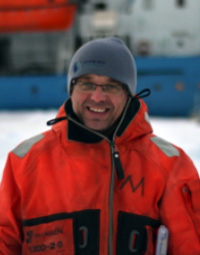 P. Kowalzuck (IOPAN, Sopot) – Poland
P. Kowalzuck (IOPAN, Sopot) – Poland  : Piotr Kowalczuk studied physical oceanography at the University of Gdansk, Poland. From 1991 he worked as the research technician and later research assistant at the Institute of Oceanology Polish Academy of Science, Sopot, Poland. In 2001 he obtained doctorate in the Earth Sciences, with specialization in physical oceanography. From 2001 t0 2003 he worked as the post doc at the Center of Marine Sciences University of North Carolina Wilmington, USA, where he worked on the spectroscopic characterization of Colored Dissolver Matter in the coastal Atlantic Ocean in the South Atlantic Bight. Since 2003 he worked as the associated research scientist and since 2011 assistant professor at the Institute of Oceanology Polish Academy of Science, Sopot, Poland. His research interest include marine optics, ocean color remote sensing, and marine biogeochemistry. He has specialized with spectroscopic characterization of colored and fluorescent dissolved organic matter in temperate (Baltic Sea) and Arctic marine waters.
: Piotr Kowalczuk studied physical oceanography at the University of Gdansk, Poland. From 1991 he worked as the research technician and later research assistant at the Institute of Oceanology Polish Academy of Science, Sopot, Poland. In 2001 he obtained doctorate in the Earth Sciences, with specialization in physical oceanography. From 2001 t0 2003 he worked as the post doc at the Center of Marine Sciences University of North Carolina Wilmington, USA, where he worked on the spectroscopic characterization of Colored Dissolver Matter in the coastal Atlantic Ocean in the South Atlantic Bight. Since 2003 he worked as the associated research scientist and since 2011 assistant professor at the Institute of Oceanology Polish Academy of Science, Sopot, Poland. His research interest include marine optics, ocean color remote sensing, and marine biogeochemistry. He has specialized with spectroscopic characterization of colored and fluorescent dissolved organic matter in temperate (Baltic Sea) and Arctic marine waters.
****
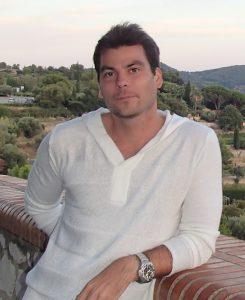
X. Luciani (LSIS, Toulon) – France  : Permanent teaching and researchposition in signal processing at the engineering school of the university of Toulon in France and at the LIS laboratory. Its research interests have been in blind source separation and blind identification based on tensor approaches, algorithms for joint eigenvalue decomposition and Canonical Polyadic Decomposition of tensors (CPD, also known as PARAFAC) and fluorescence spectroscopy [1]. More precisely, in this area his works focus on tensor decompositions of Fluorescence Excitation Emission Matrices (FEEM) and on inner filter effects modeling and correction [2].
: Permanent teaching and researchposition in signal processing at the engineering school of the university of Toulon in France and at the LIS laboratory. Its research interests have been in blind source separation and blind identification based on tensor approaches, algorithms for joint eigenvalue decomposition and Canonical Polyadic Decomposition of tensors (CPD, also known as PARAFAC) and fluorescence spectroscopy [1]. More precisely, in this area his works focus on tensor decompositions of Fluorescence Excitation Emission Matrices (FEEM) and on inner filter effects modeling and correction [2].
[1] Xavier Luciani, Laurent Albera. Canonical Polyadic Decomposition based on joint eigenvalue decomposition. Chemometrics and Intelligent Laboratory Systems, Elsevier, 2014, 132, pp. 152-167.
[2] Jérémy E. Cohen, Pierre Comon, Xavier Luciani. Correcting inner filter effects, a non multilinear tensor decomposition method. Chemometrics and Intelligent Laboratory Systems, Elsevier, 2016, 150, pp.29-40.
****
 D. Milori (EMBRAPA, São Carlos) – Brasil
D. Milori (EMBRAPA, São Carlos) – Brasil  :Physicist, graduated from the University of Sao Paulo, Master and Ph.D. degrees in Physics from IFSC-USP. She has experience on Optical and Photonic methods of analysis, acting on the following subjects: soil organic matter, nutrients and contaminants and plant diseases. http://www.researcherid.com/rid/D-3875-2011.
:Physicist, graduated from the University of Sao Paulo, Master and Ph.D. degrees in Physics from IFSC-USP. She has experience on Optical and Photonic methods of analysis, acting on the following subjects: soil organic matter, nutrients and contaminants and plant diseases. http://www.researcherid.com/rid/D-3875-2011.
****
 S. Mounier (MIO) – France
S. Mounier (MIO) – France  : Researcher at the Mediterrannean Intstitut of Oceanography. He his PhD on Amazon river organic matter fluxes and caracterisation and the Paris VI university. Since he joined the RCMO laboratory in Toulon, belonging PROTEE laboratory, is working on organic matter spectroscopy and interaction with metal in various environments (soils, lakes, seawater, interstitial water, sediment and solids) using PARAFAC decomposition. With R. Redon he is developping the PROGMEEF interface and fluorescence quenching modelling. The last topics focuse on solid surface fluorescence and laser induiced time resolved fluorescence spectroscopy.
: Researcher at the Mediterrannean Intstitut of Oceanography. He his PhD on Amazon river organic matter fluxes and caracterisation and the Paris VI university. Since he joined the RCMO laboratory in Toulon, belonging PROTEE laboratory, is working on organic matter spectroscopy and interaction with metal in various environments (soils, lakes, seawater, interstitial water, sediment and solids) using PARAFAC decomposition. With R. Redon he is developping the PROGMEEF interface and fluorescence quenching modelling. The last topics focuse on solid surface fluorescence and laser induiced time resolved fluorescence spectroscopy.
[1] Nouhi, A., Hajjoul, H., Redon, R., Gagné, J. P., & Mounier, S. (2018). Time-resolved laser fluorescence spectroscopy of organic ligands by europium: Fluorescence quenching and lifetime properties. Spectrochimica Acta – Part A: Molecular and Biomolecular Spectroscopy, 193. http://doi.org/10.1016/j.saa.2017.12.028
****
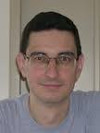 R. Redon (MIO) – France
R. Redon (MIO) – France  : Researcher at the Mediterranean Institute of Oceanography. In 2000, he joined the LOA laboratory in Toulon, which became the ISO team of the PROTEE laboratory in 2004. He is working on time deconvolution and source decomposition applied on spectroscopic signals (Fluorescence Excitation and Emission Matrices, time-resolved spectra). He is developing progMEEF and progTIME user‑friendly interfaces to visualize and to treat measurements obtained by steady-state spectrofluorimetry and time-resolved laser spectroscopy.
: Researcher at the Mediterranean Institute of Oceanography. In 2000, he joined the LOA laboratory in Toulon, which became the ISO team of the PROTEE laboratory in 2004. He is working on time deconvolution and source decomposition applied on spectroscopic signals (Fluorescence Excitation and Emission Matrices, time-resolved spectra). He is developing progMEEF and progTIME user‑friendly interfaces to visualize and to treat measurements obtained by steady-state spectrofluorimetry and time-resolved laser spectroscopy.
[1] Mounier, S., Redon, R., Nicolodelli, N., Milori, D. M. B. P. (2017). Front-face fluorescence spectroscopy of tryptophan and fluorescein using laser induced fluorescence and excitation emission matrix fluorescence. RSC Advances 7(88).
[2] Luciani, X., Redon, R., Mounier, S. (2013). How to correct inner filter effects altering 3D fluorescence spectra by using a mirrored cell. Chemometrics and Intelligent Laboratory Systems 126:91–99.
****
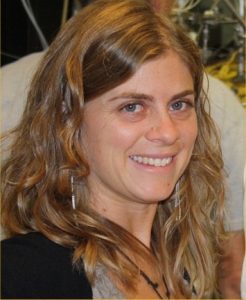 C. Santinelli (CNR Italie) – Italie
C. Santinelli (CNR Italie) – Italie  : a biologist by training, carried out her PhD in chemical oceanography at Pisa university, working on “dissolved organic carbon (DOC) and chromophoric dissolved organic matter (CDOM) in the Mediterranean Sea”. She is a researcher at the Biophysics Institute (CNR) and professor of Oceanography at Pisa University. Her research interests focus on dissolved organic matter (DOM) dynamics in both coastal areas and open sea waters, with particular regards to the role of DOM in the global carbon cycle. She is currently working on optical properties of CDOM, using PARAFAC decomposition, in coastal and open sea water, in rivers and atmospheric depositions.
: a biologist by training, carried out her PhD in chemical oceanography at Pisa university, working on “dissolved organic carbon (DOC) and chromophoric dissolved organic matter (CDOM) in the Mediterranean Sea”. She is a researcher at the Biophysics Institute (CNR) and professor of Oceanography at Pisa University. Her research interests focus on dissolved organic matter (DOM) dynamics in both coastal areas and open sea waters, with particular regards to the role of DOM in the global carbon cycle. She is currently working on optical properties of CDOM, using PARAFAC decomposition, in coastal and open sea water, in rivers and atmospheric depositions.
****
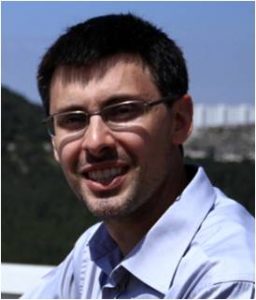 M. Tedetti Marc (MIO) – France
M. Tedetti Marc (MIO) – France  –
– : Researcher at IRD-MIO since 2013. His research field is the organic geochemistry of aquatic ecosystems and more particularly the dynamics of organic pollutants and dissolved organic matter in coastal waters. He is currently posted in Tunisia in the framework of a IRD French-Tunisian International Joint Laboratory.
: Researcher at IRD-MIO since 2013. His research field is the organic geochemistry of aquatic ecosystems and more particularly the dynamics of organic pollutants and dissolved organic matter in coastal waters. He is currently posted in Tunisia in the framework of a IRD French-Tunisian International Joint Laboratory.
URLs : https://www.mio.univ-amu.fr/spip.php?page=pageperso&id_user=4718
https://www.researchgate.net/profile/Marc_Tedetti
****
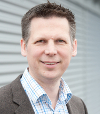 O. Zielinski (ICBM, Oldenburg) – Allemagne
O. Zielinski (ICBM, Oldenburg) – Allemagne  : Prof. Dr. Oliver Zielinski is director of the Institute for Chemistry and Biology of the Marine Environment (ICBM) of the University of Oldenburg and head of the research group “Marine Sensor Systems”. His research activities focus on the development of innovative methods and sensors for marine observation, especially based on optical and acoustic principles. In 1999, he completed his doctorate in physics at the University of Oldenburg. After that, he moved to industry where he became scientific director and CEO of “Optimare Group”, an international supplier of marine sensor systems. In 2005, he was appointed professor at the University of Applied Science in Bremerhaven, Germany. In 2007, he became director of the Institute for Marine Resources (IMARE). After that, he returned to the University of Oldenburg in 2011. His area of research covers marine optics and marine physics, with a special focus on coastal systems, marine sensors and operational observatories while involving different user groups and stakeholders. (URLs : http://www.icbm.de, http://www.icbm.de/en/marine-sensor-systems/
: Prof. Dr. Oliver Zielinski is director of the Institute for Chemistry and Biology of the Marine Environment (ICBM) of the University of Oldenburg and head of the research group “Marine Sensor Systems”. His research activities focus on the development of innovative methods and sensors for marine observation, especially based on optical and acoustic principles. In 1999, he completed his doctorate in physics at the University of Oldenburg. After that, he moved to industry where he became scientific director and CEO of “Optimare Group”, an international supplier of marine sensor systems. In 2005, he was appointed professor at the University of Applied Science in Bremerhaven, Germany. In 2007, he became director of the Institute for Marine Resources (IMARE). After that, he returned to the University of Oldenburg in 2011. His area of research covers marine optics and marine physics, with a special focus on coastal systems, marine sensors and operational observatories while involving different user groups and stakeholders. (URLs : http://www.icbm.de, http://www.icbm.de/en/marine-sensor-systems/
[1] Pearlman J, Zielinski O (2017) A new generation of optical systems for ocean monitoring – matrix fluorescence for multifunctional ocean sensing. Sea Technology, 2, pp 30-33
[2] Miranda ML, Mustaffa NIH, Robinson TB, Stolle C, Ribas-Ribas M, Wurl O, Zielinski O (2018) Influence of solar radiation on biogeochemical parameters and fluorescent dissolved organic matter (FDOM) in the sea surface microlayer of the southern coastal North Sea. Elem Sci Anth, 6: 15. DOI: https://doi.org/10.1525/elementa.278


 M. Bieroza (Upsala) – Sweden
M. Bieroza (Upsala) – Sweden 
 P. Comon (GIPSA Lab, Grenoble) – France
P. Comon (GIPSA Lab, Grenoble) – France  M. Goutx (MIO) – France
M. Goutx (MIO) – France  M. Khan (Institute of Surface-Earth System Science)
M. Khan (Institute of Surface-Earth System Science) P. Kowalzuck (IOPAN, Sopot) – Poland
P. Kowalzuck (IOPAN, Sopot) – Poland 
 D. Milori (EMBRAPA, São Carlos) – Brasil
D. Milori (EMBRAPA, São Carlos) – Brasil  S. Mounier (MIO) – France
S. Mounier (MIO) – France  R. Redon (MIO) – France
R. Redon (MIO) – France  C. Santinelli (CNR Italie) – Italie
C. Santinelli (CNR Italie) – Italie 

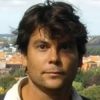
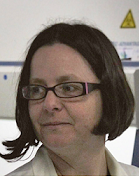

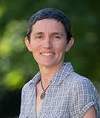
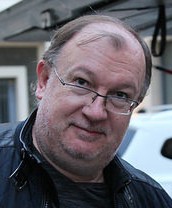
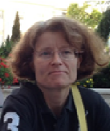
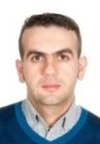

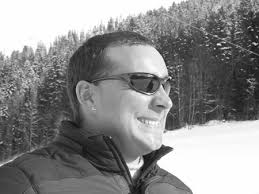 Session 3 : EEMs and tensors
Session 3 : EEMs and tensors